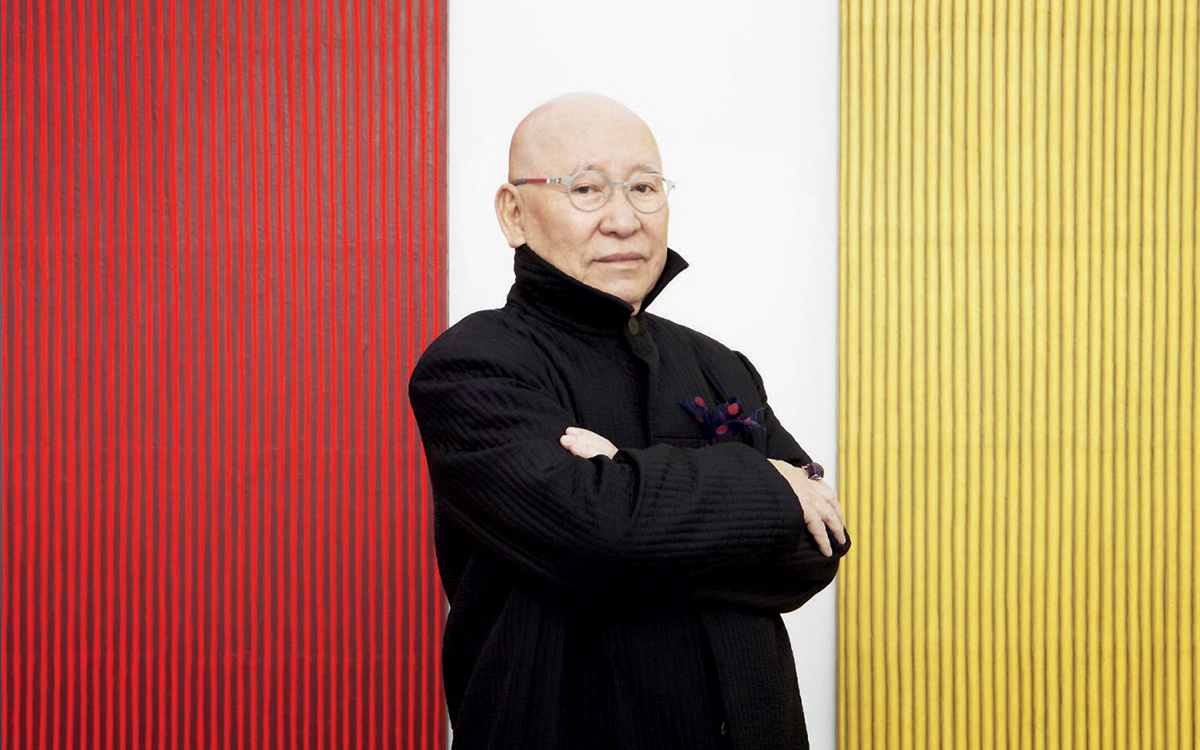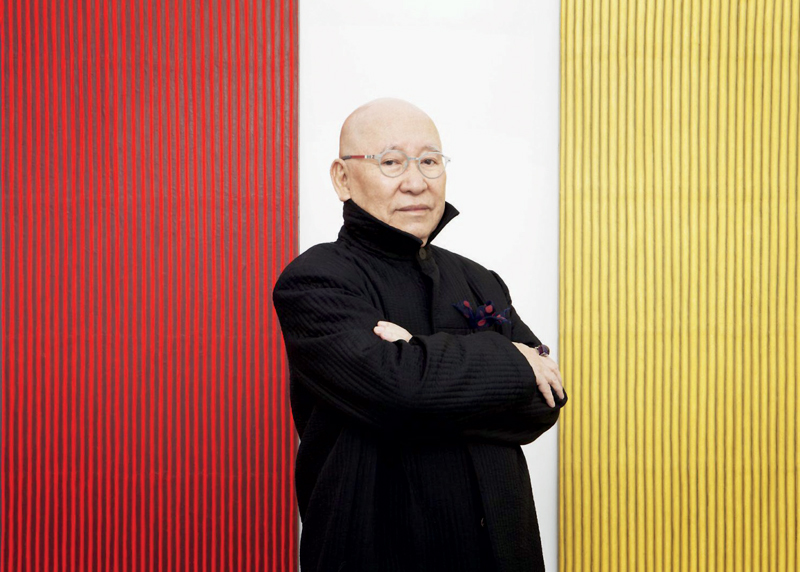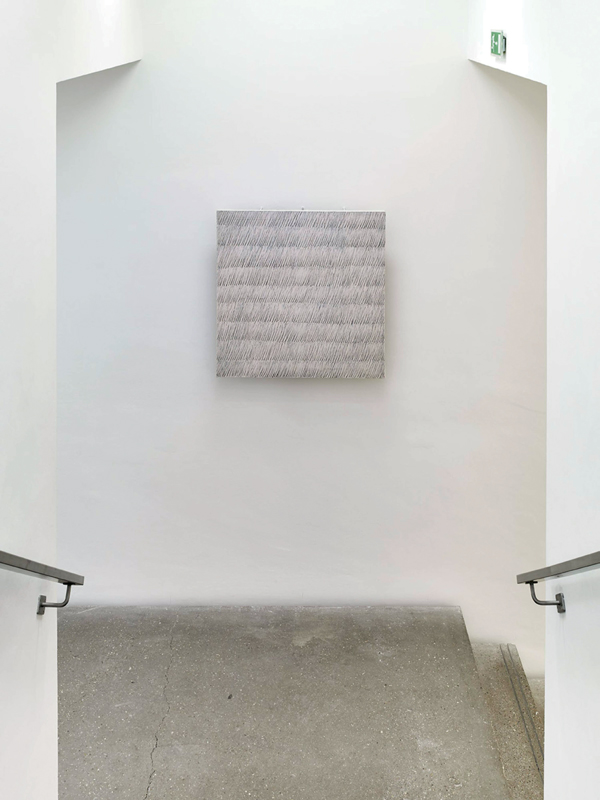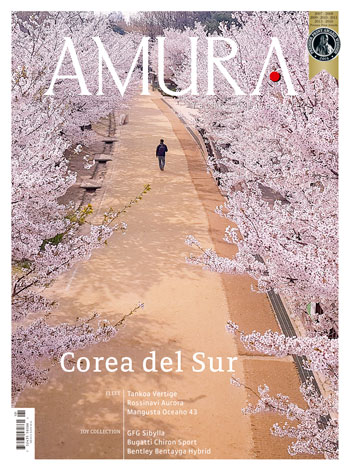“Even though my paintings may represent an idea about culture, the main focus is based on na-ture. I want to reduce the idea and emotion in my work to express only that. I want to reduce and reduce to create pure emptiness.”
Lee Ufan
Born in the province of Gyeongbuk in1931, Park Seo-Bo, along other contemporary post-war artists, draws inspiration from his bleak experiences while growing up and the aftermath of the Korean civil war in the 50s. He is one of the most prominent figures in the Dansaekhwa movement, with an array of paintings that feature repetitive patterns and monochromatic environments. Just like Lee Ufan, Park aims to conquer a sense of totality that paradoxically appeals to nothingness, filling and manipulating—tearing, soaking or pulling—the canvases with lines, either vertical, horizontal or diagonal, in a process that turns the essence of nature into something abstract within a limited palette. His work has been recognized worldwide and his installments have been exhibited in some of the most prominent national and international venues and galleries: Venice Biennale, Samsung Museum of Art in Seoul, Montreal Guggenheim, Abu Dhabi in the UAE, the Busan Museum of Art, Singapore Art Museum, Kunsthalle Wien in Vienna, the Miyagi Museum of Art, Sendai Portland Museum of Art, Oregon, and the Museum of Contemporary Art in Tokyo.
Text: Ashanti Rojano ± Photo: OPIOM GALLERY / STUDIO JKM / jra / SINASTY KOREA / ATR / NR / Slummy / FPD / HYPOCRITE DESIGN / KRISTALL WELTEN / NGV / KN PHOTO / e flux / JN TSU / central seoulcourtesy PKM gallery, seoul / I0W / SNOOPEST / copyright © Jeong-moon Choi - All rights reserved.






